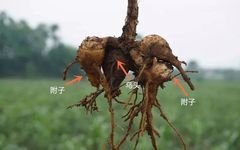AliasFu Pian, Salt Aconite, Black Shun Pian, White Fu PianProperties and Channels Spicy, Sweet, Very Hot; toxic. Enters the Heart, Kidney, and Spleen channels. (This product is highly toxic; use with caution and follow medical advice.)Functions and Indications Revives Yang and rescues from collapse, supplements fire and assists Yang, disperses cold and alleviates pain. Used for Yang collapse, cold limbs, weak pulse, insufficient Heart Yang, chest obstruction and heart pain, cold and deficient vomiting and diarrhea, chronic dysentery, cold abdominal pain, Kidney Yang deficiency, impotence, cold water retention, Yang deficiency with external pathogens, and cold dampness causing pain. (1) Reviving Yang and rescuing from collapse: Has a strong effect in reviving Yang. Used for aversion to cold, cold limbs, and weak pulse indicating collapse, often combined with Ren Shen (Ginseng), or Gan Jiang (Dried Ginger), and Gan Cao (Licorice).(2) Supplementing Yang Qi: Aconite is spicy and hot, its nature is to move and not to stay, it can circulate through the twelve channels, thus it can be used for all symptoms of Yang Qi deficiency, especially to supplement Kidney Yang. For Kidney Yang supplementation, it is often combined with Rou Gui (Cinnamon).(3) Dispelling cold and alleviating pain: This product is very hot and has a strong ability to dispel cold, thus it can treat abdominal pain and diarrhea caused by internal cold invasion, as well as pain from cold dampness obstructing the channels.
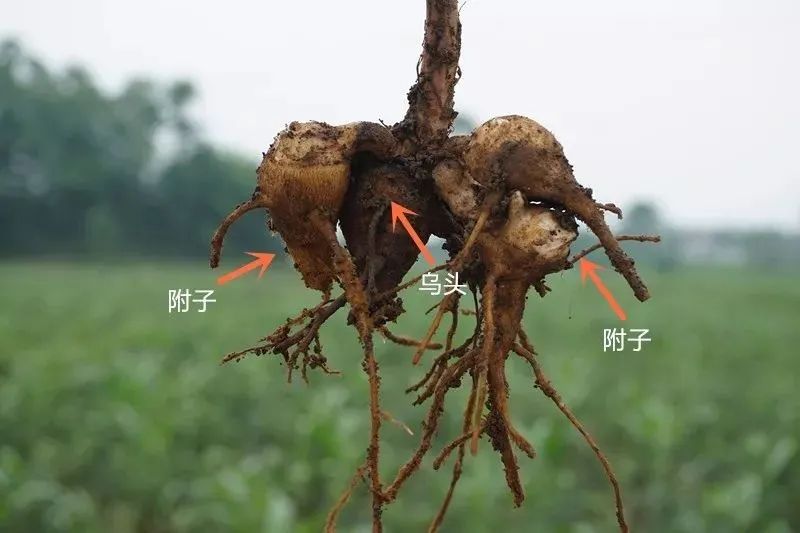
Dosage and Administration Internal use: Decoction, 3-9g (processed product), first decocted, long decoction, for reviving Yang and rescuing from collapse can use 18-30g; or made into pills or powders. External use: Appropriate amount, ground into powder for topical application, or cut into thin slices to cover the affected area or acupoints, and apply moxibustion. Internal use should be processed and decocted for a long time; external use often uses the raw product. Precautions Contraindicated in cases of Yin deficiency with Yang excess, true heat with false cold, and in pregnant women; should not be used with Ban Xia (Pinellia), Gua Lou (Trichosanthes), Gua Lou Zi (Trichosanthes Seed), Gua Lou Pi (Trichosanthes Peel), Tian Hua Fen (Trichosanthes Root), Chuan Bei Mu (Fritillaria), Zhe Bei Mu (Fritillaria), Ping Bei Mu (Fritillaria), Yi Bei Mu (Fritillaria), Hu Bei Bei Mu (Fritillaria), Bai Lian (Ampelopsis), and Bai Ji (Bletilla). Toxicity This product can easily cause poisoning due to improper processing or excessive dosage. Symptoms of poisoning: Burning sensation in the mouth, numbness (starting from the fingers and gradually spreading to the whole body), salivation, nausea, possible vomiting, fatigue, difficulty breathing, dilated pupils, irregular pulse (weak and slow), cold and clammy skin, pale complexion, and possible sudden death. Rescue methods: 1-2% tannic acid for gastric lavage, administer emetics as appropriate; take activated charcoal (mixed in water); intravenous injection of glucose saline. Symptomatic treatment; timely use of stimulants like Nikethamide; maintain warmth; provide oxygen or perform artificial respiration if necessary; if pulse is slow and weak, subcutaneously inject Atropine.
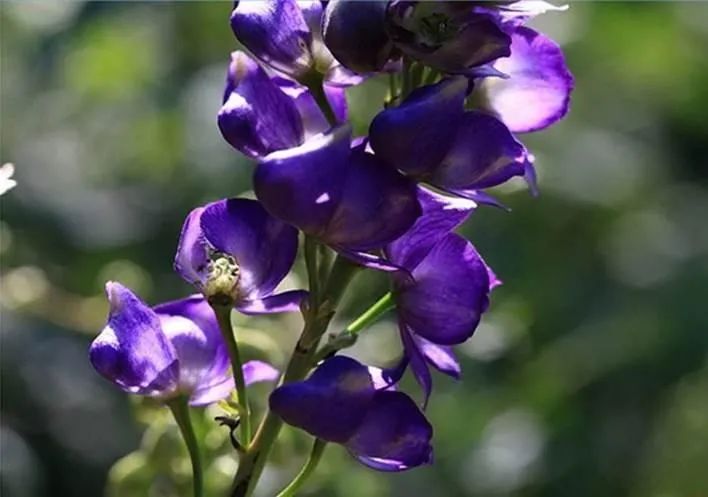
Source This product is processed from the tuber of the plant Aconitum carmichaelii Debx. Collected from late June to early August, removing the main root, fibrous roots, and soil, commonly referred to as “Ni Fu Zi” (Mud Aconite), processed into the following specifications. (1) Select large, uniform Ni Fu Zi, wash clean, soak in a solution of gall water overnight, then add salt, continue soaking, taking out and drying in the sun daily, gradually extending the drying time until a large amount of crystalline salt (salt frost) appears on the surface of the Aconite and its texture becomes hard, commonly referred to as “Yan Fu Zi” (Salt Aconite).(2) Take Ni Fu Zi, wash clean according to size, soak in gall water solution for several days, boil with the soaking liquid until thoroughly cooked, take out, rinse with water, cut into slices about 0.5cm thick, then soak in water, dye with coloring liquid to a dark tea color, take out, steam until oil surface and gloss appear, then dry until half dry, or continue to dry, commonly referred to as “Hei Shun Pian” (Black Shun Slices).(3) Select uniform-sized Ni Fu Zi, wash clean, soak in gall water solution for several days, boil with the soaking liquid until thoroughly cooked, take out, peel, cut into slices about 0.3cm thick, soak in water, take out, steam until cooked, and dry, commonly referred to as “Bai Fu Pian” (White Aconite Slices).
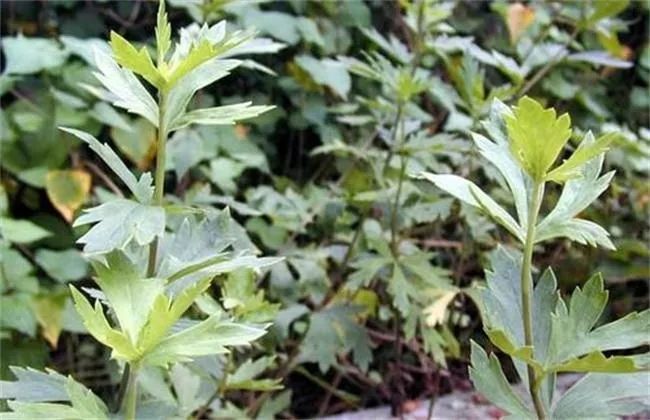
CharacteristicsYan Fu Zi is conical, 4-7cm long, 3-5cm in diameter. The surface is gray-black, covered with salt frost, with a depressed bud mark at the top, surrounded by tuberous protrusions or root marks. Heavy, cross-section gray-brown, with small voids filled with salt frost and polygonal growth rings, the vascular bundles inside the growth rings are arranged irregularly. Slight odor, salty and numbing taste, prickly on the tongue.Hei Shun Pian is longitudinally cut, wide at the top and narrow at the bottom, 1.7-5cm long, 0.9-3cm wide, 0.2-0.5cm thick. The outer skin is black-brown, the cut surface is dark yellow, oily and glossy, semi-transparent, with longitudinal vascular bundles. Hard and brittle, the fracture surface is horn-like. Slight odor, bland taste.Bai Fu Pian has no outer skin, yellow-white, semi-transparent, about 0.3cm thick.

ProcessingFu Pian (Hei Shun Pian, Bai Fu Pian) can be used directly as medicine. Duan Fu Pian is made from Yan Fu Zi, soaked in clean water, changing water 2-3 times daily, until the salt is completely leached out, then boiled with Gan Cao (Licorice) and Hei Dou (Black Bean) until thoroughly cooked, until there is no numbing sensation when tasted after cutting. Take out, remove Gan Cao and Hei Dou, cut into thin slices, and dry. For every 100kg of Yan Fu Zi, use 5kg of Gan Cao and 10kg of Hei Dou. It is cut into longitudinal slices, wide at the top and narrow at the bottom, 1.7-5cm long, 0.9-3cm wide, 0.2-0.5cm thick. The outer skin is brown. The cut surface is brown, semi-transparent, with longitudinal vascular bundles. Hard texture, fracture surface is horn-like. Slight odor, bland taste, no numbing sensation when tasted.Pa Fu Pian is made from Yan Fu Zi, washed clean, soaked in clean water overnight, removing the skin and navel, cut into slices, then soaked in water until there is a slight numbing sensation, take out, soak in ginger soup for 1-3 days, then steam until cooked, then roast until 70% dry, put in a pot and stir-fry over high heat until smoke rises and it slightly bulges and cracks, take out and cool.It resembles Hei Shun Pian or Bai Fu Pian, with a yellow-brown surface, and a loose and brittle texture. Slight odor, bland taste.
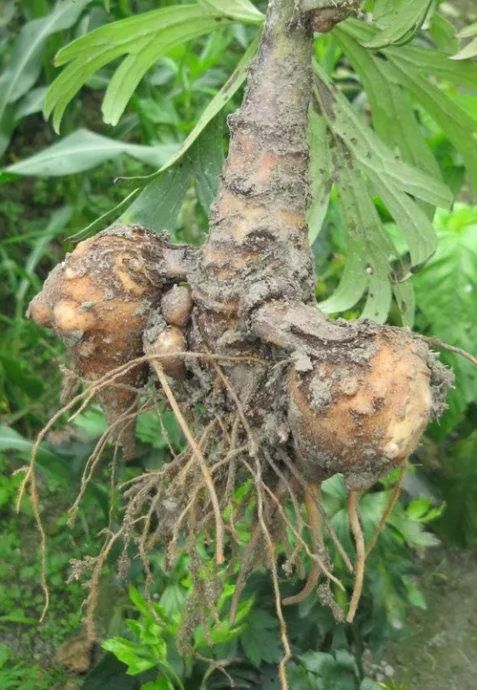
Formulas ① For vomiting, sweating, fever, aversion to cold, and cold limbs: Gan Cao (2 liang, roasted), Gan Jiang (1.5 liang), Aconite (1 piece, raw, peeled, broken into 8 pieces). Combine these three ingredients, boil with 3 sheng of water to obtain 1 sheng and 2 ge, strain, and take warm. Strong individuals can use 1 piece of Aconite and 3 liang of Gan Jiang. (From “Shang Han Lun” Si Ni Decoction) ② For cold damage with Yin excess, the person must be agitated and not want to drink water: Aconite (1 piece, burned to ash, retain the essence, powdered); take with honey water. (From “Chuan Jia Mi Bao Fang” Pi Li San) ③ For Yin toxicity and cold damage, with a blue face, cold limbs, abdominal pain, and cold body: Aconite (3 pieces, processed, peeled) powdered. Each dose is 3 qian, with ginger juice (half a ban) and cold wine (half a ban), take together. After a long time, the navel should feel warm like fire. (From “Ji Sheng Fang” Hui Yang San) ④ For cold damage that has already descended, with sweating, internal and external deficiency, evil not resolved, no surface symptoms, no high fever, daytime restlessness, unable to sleep, and quiet at night, no vomiting or thirst, with a deep and weak pulse: it is advisable to take this. Also for sudden wind-cold, long-standing phlegm and water, cold abdominal pain, cholera, and all virtual cold: Gan Jiang (coarsely ground, 1 liang), Aconite (raw, peeled, finely sliced, 1 piece). Mix well. Each dose is 3 qian, with 1.5 ban of water, boil until 1 ban, strain and take warm before meals. (From “Ju Fang” Jiang Fu Decoction)
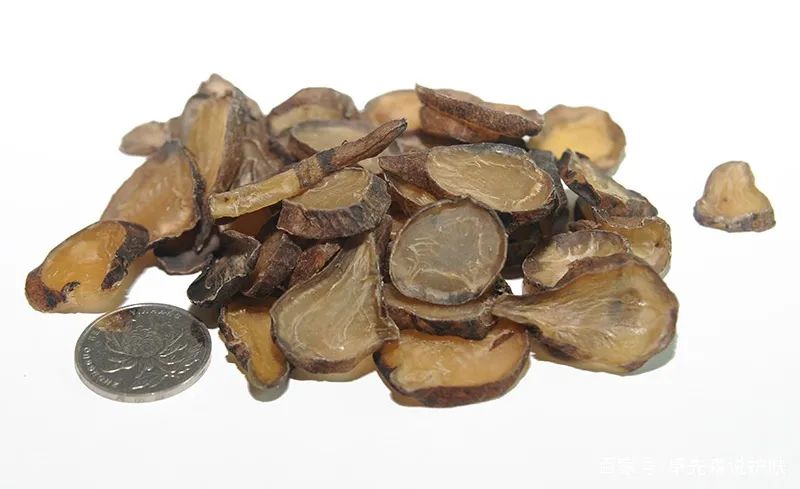
⑤ For vomiting and reversal of the stomach: Aconite (1 piece), fresh ginger (1 piece, finely shredded). Boil and grind into a paste, take with rice drink. (From “Experience Formulas”) ⑥ For all heart pain, small intestine and bladder pain that cannot be stopped: Aconite (1 liang, processed), Yu Jin (1 liang), Ju Hong (1 liang). Powder together, make into pills with vinegar paste, the size of sour jujube, coated with cinnabar. Each dose is 1 pill, taken with wine for men, and vinegar soup for women. (From “Xuan Ming Lun Fang” Chen Sha Dan) ⑦ For seven types of hernia, cold abdominal pain, rumbling intestines, cold body with white sweat, and diarrhea: Mu Xiang (not exposed to fire, 0.5 liang), Xuan Hu Suo (stir-fried, peeled), Aconite (processed, peeled) each 1 liang. Powder together, each dose is 4 qian, with 1.5 ban of water, 7 slices of ginger, boil until 7 parts, strain, and take warm. (From “Ji Sheng Fang” Xuan Fu Decoction) ⑧ For dysentery and red-white dysentery: Aconite (processed, peeled, 0.5 liang), chicken eggs (2 pieces, remove yolk and take white). First, pound Aconite into powder, mix with egg white to form pills the size of a phoenix seed. At one time, pour into boiling water, boil several times, strain, and divide into two doses, take with rice drink on an empty stomach, at noon. (From “Sheng Ji Zong Lu” Aconite Pill)
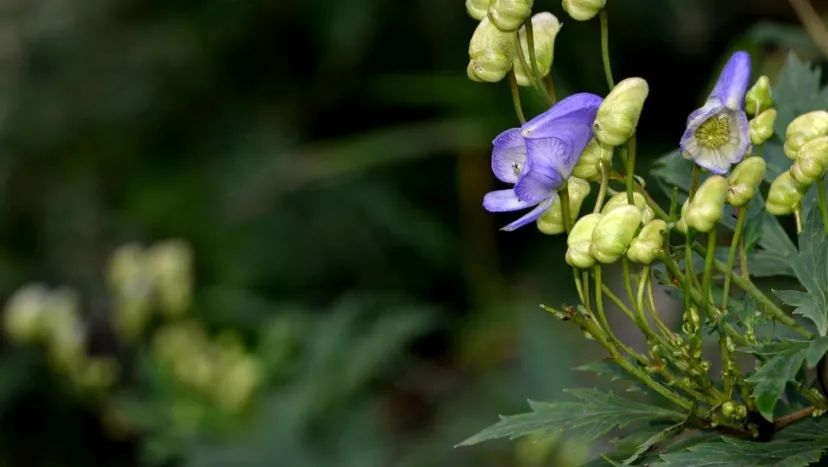
⑨ For cold spleen diarrhea, and elderly with insufficient Qi: Rou Dou Kou (2 liang, warmed), Aconite (1.5 liang, peeled). Powder together, make into pills the size of a phoenix seed. Each dose is 80 pills, taken with lotus seed decoction. (From “Gang Mu”) ⑩ For spleen deficiency with dampness causing swelling, all virtual swelling: Aconite (10 pieces, raw, peeled, broken into 4 pieces), red adzuki beans (0.5 sheng), bury Aconite in the middle, slowly cook Aconite until soft, remove beans, dry Aconite and grind into powder, make into pills with coix seed powder the size of a phoenix seed. Each dose is 10 pills, taken with winter melon soup or radish soup. (From “Zhu Shi Ji Yan Yi Fang”) ⑾ For swelling and fullness due to accumulation, with difficulty urinating: Raw Aconite (1 piece, peeled, sliced), fresh ginger (10 slices), add 1 qian of sandalwood, grind with water and boil, take cold before meals, children take 3 qian, boiled with water. (From “Zhu Shi Ji Yan Yi Fang” Chen Fu Decoction) ⑿ For wind-dampness causing joint pain, with difficulty bending and stretching, severe pain upon approach, sweating and shortness of breath, difficulty urinating, aversion to wind and not wanting to remove clothing, or slight swelling: Gan Cao (roasted, 2 liang), Aconite (processed, peeled, broken, 2 pieces), Bai Zhu (2 liang), Gui Zhi (peeled, 4 liang). Combine these four ingredients, boil with 6 sheng of water to obtain 3 sheng, strain and take warm, 1 sheng each time, three times a day. (From “Shang Han Lun” Gan Cao Aconite Decoction)

⒀ For Shaoyin disease, body pain, cold hands and feet, joint pain, and deep pulse: Aconite (2 pieces, processed, peeled, broken into 8 pieces), Fu Ling (3 liang), Ren Shen (2 liang), Bai Zhu (4 liang), Shao Yao (3 liang). Combine these five ingredients with 8 sheng of water, boil to obtain 3 sheng, strain, take warm, 1 sheng each time, three times a day. (From “Shang Han Lun” Aconite Decoction) ⒁ For wind stroke with unilateral paralysis: Aconite (1 piece, peeled), Qiang Huo (1 liang), Wu Yao (1 liang). Powder together, each dose is 4 qian, with 1 ban of water, boil for 7 parts, strain and take warm. (From “Jian Yi Fang Lun” Qiang Huo San) ⒂ For wind-cold flow causing unilateral headache, not cured for years: Aconite (1 piece), cut into 4 slices, soak in ginger juice (1 ban), roast, soak again, roast again, stop when the juice is gone; Gao Liang Jiang, equal parts, powdered. Each dose is 1 qian, taken with wax tea, avoid hot food. (From “San Yin Fang” Bi Xiao San) ⒃ For Qi deficiency headache: Aconite (1 piece), whole scorpion (2 pieces, detoxified), stalactite powder (2-3 qian). Use Aconite to remove the heart, place the whole scorpion inside, then grind the whole Aconite into powder, mix with a little stalactite powder, water to make a paste, wrap and steam until cooked, then grind into fine powder, make into pills the size of a phoenix seed. Each dose is 70 pills, taken on an empty stomach before meals, with pepper salt soup. Another method is to make a powder, taken with scallion tea soup. (From “Dan Liao Fang” Scorpion Aconite Pill)
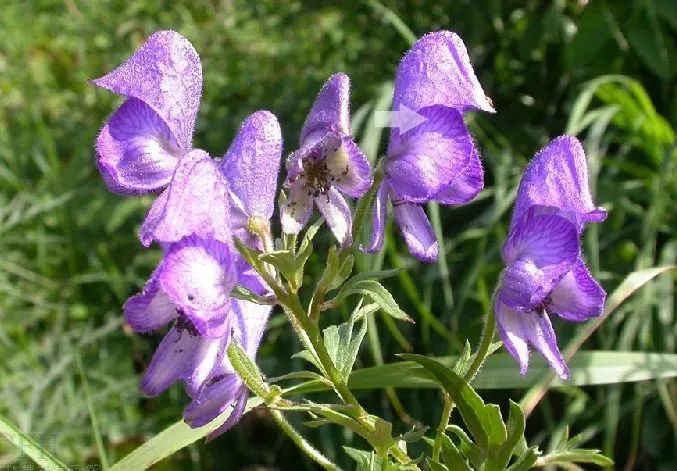
⒄ For headache: Aconite (processed), Shi Gao (calcined) in equal parts. Powder together, add a little brain and musk, take with tea or wine. (From “Chuan Jia Mi Bao Fang”) ⒅ For menstrual irregularities, blood stagnation and cold pain: Dang Gui, Aconite (processed) in equal parts. Coarsely powdered. Each dose is 3 qian, with 1 ban of water, boil until 8 parts, take warm on an empty stomach. (From “Jian Yi Fang” Xiao Wen Jing Decoction) ⒆ For vomiting blood: Sheng Di Huang (1 jin, cleaned, finely ground to extract juice, the residue is added to good wine, extract juice until exhausted), Aconite (1 liang, processed, peeled, sliced, added to the juice of Di Huang, cooked in a silver container until it becomes a paste, then dry Aconite). Mix with 3 liang of Shan Yao powder, make into pills the size of a jujube. Each dose is 30 pills, taken with rice drink on an empty stomach. (From “Zhu Shi Ji Yan Yi Fang” Di Huang Pill) ⒇ For Kidney Qi rising, unable to turn the neck: Aconite (1 piece, peeled, cut into slices), 6 qian or more, processed, powdered. Each dose is 2 large qian, with 20 grains of Sichuan pepper, filled with white flour, with 1.5 ban of water, 7 slices of ginger, boil until 7 parts, remove pepper and add salt, take on an empty stomach. (From “Ben Shi Fang” Jiao Fu San)
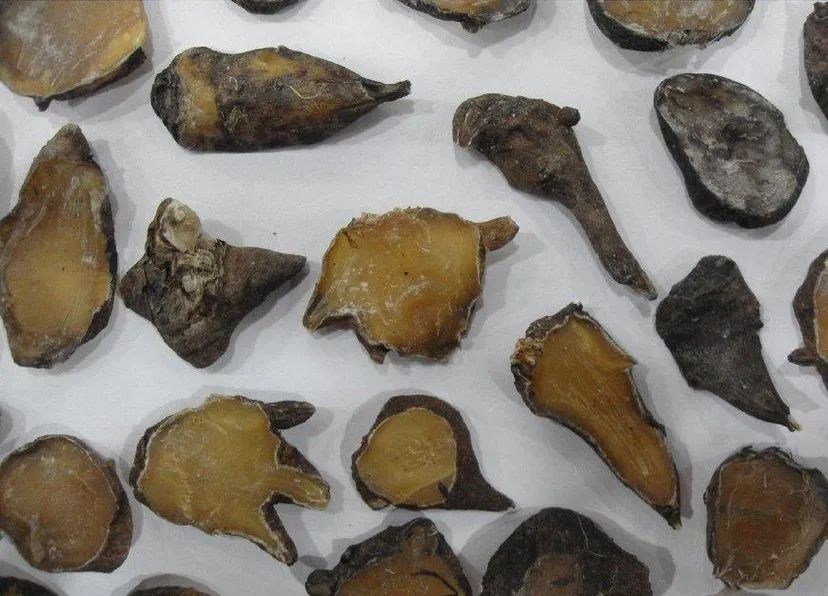
(21) For difficulty urinating, both pulses are deep and weak, and using diuretics is ineffective: Aconite (1 liang, heavily processed, peeled, soaked in salt water for a long time), Ze Xie (1 liang, not rotten). Powder together, each dose is 4 qian, with 1.5 ban of water, 7 stems of lamp wick, boil and take. (From “Pu Ji Fang” Aconite Powder) (22) For Shaoyin cold damage (initially 2-3 days, pulse weak and thin, but drowsy, with white urine): Ma Huang (2 liang, remove nodes), Gan Cao (2 liang, roasted), Aconite (1 piece, processed, peeled). Use 7 sheng of water. First boil Ma Huang to remove foam, then add the other two herbs, boil until the juice is 3 sheng, divide into three doses. Let the patient sweat slightly. The formula is called “Ma Huang Aconite Gan Cao Decoction”. (23) For Shaoyin fever (initially 2-3 days, but fever and pulse deep): Ma Huang (2 liang, remove nodes), Aconite (1 piece, processed, peeled), Xi Xin (2 liang), 10 sheng of water. First boil Ma Huang to remove foam, then add the other two herbs, boil until the juice is 3 sheng, divide into three doses. Let the patient sweat slightly. This formula is called “Ma Dian Aconite Xi Xin Decoction”.

(24) For Shaoyin diarrhea (clear grains, internal cold and external heat, cold hands and feet, pulse weak and about to collapse, body does not dislike cold, but face is red, or abdominal pain, or dry vomiting, or sore throat): Aconite (1 piece, peeled, cut into slices), Gan Cao (2 liang, roasted), Gan Jiang (3 liang), add 1 sheng of water, boil to obtain 1 sheng, take warm in two doses, pulse should appear to recover. If the face is red, add 9 stalks of scallion; if there is abdominal pain, add 2 liang of Shao Yao; if there is dry vomiting, add 2 liang of fresh ginger; if there is sore throat, add 1 liang of Jie Geng; if diarrhea stops but pulse does not appear, add 2 liang of Ren Shen. This formula is called “Pulse Si Ni Decoction”. (25) For Yin disease with aversion to cold (after sweating, not resolved, but aversion to cold is a sign of body deficiency): Shao Yao (3 liang), Gan Cao (3 liang, roasted), Aconite (1 piece, processed, peeled), add 5 sheng of water, boil to obtain 1 sheng and 5 ge. Take in several doses. This formula is called “Shao Yao Gan Cao Aconite Decoction”. (26) For Yin excess blocking Yang (the patient is agitated, hot, and wants to drink water, pulse deep, cold hands and feet): Aconite (1 piece), burned to retain essence, powdered, take with honey water. After dispersing cold, heat rises, sweating leads to recovery. This formula is called “Pi Li San”. (27) For wind stroke with phlegm blockage (unconscious, mouth and eyes crooked): Raw Chuan Wu (half liang), Raw Aconite (half liang, peeled, navel removed), each take half liang, with Nan Xing (1 liang), and Sheng Mu Xiang (2.5 qian). Mix the herbs, each take 5 qian, add 10 slices of ginger, 2 bowls of water, boil to 1 bowl, take warm. This formula is called “Wu Sheng Yin”.
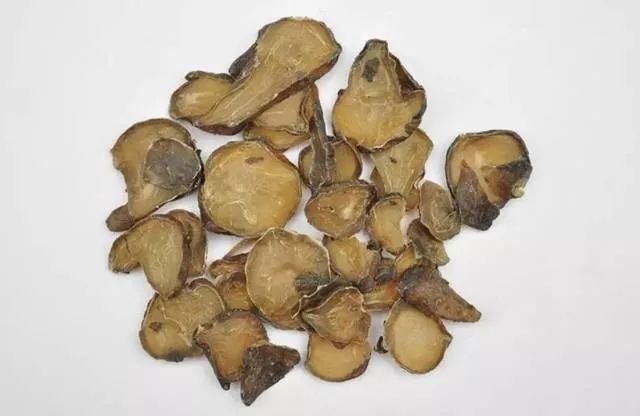
Literature Excerpts 1. “Traditional Chinese Medicine” 【Effects】 Revives Yang, warms the Spleen and Kidney, disperses cold and alleviates pain. 【Clinical Applications】 ① Used for Yang collapse, weak pulse, etc. Aconite is spicy and hot, mainly used for cold sweat, cold limbs, weak pulse, or due to excessive sweating, vomiting, or reversal, often combined with Ren Shen, Gan Jiang, and roasted Gan Cao. If there is profuse cold sweat and Yang collapse, Aconite and Ren Shen should be combined with Long Gu (Dragon Bone), Mu Li (Oyster Shell), and other astringent herbs to stop sweating; if after severe bleeding, hands and feet are cold, sweating, and pulse is weak, it can be used with Ren Shen, Aconite, Long Gu, and Mu Li combined with Mai Dong (Ophiopogon) and Wu Wei Zi (Schisandra) to revive Yang and rescue Yin. ② Used for Kidney Yang deficiency, aversion to cold, cold limbs, Spleen Yang deficiency, abdominal pain, and loose stools. Aconite has a strong effect in supplementing Yuan Yang, benefiting the source of fire, for all symptoms of Kidney Yang deficiency, weak life fire, aversion to cold, cold limbs, impotence, and frequent urination can be applied, often combined with Rou Gui, Shu Di Huang (Rehmannia), Tu Si Zi (Cuscuta), and Shan Yu Rou (Cornus). If Spleen Yang is deficient, with cold abdominal pain and loose stools, Aconite can also be combined with Qi-invigorating and Spleen-warming herbs like Dang Shen, Bai Zhu, Gan Jiang, and roasted Gan Cao. ③ Used for wind-cold-dampness obstruction, with pain in the joints and bones. Aconite has a warm nature and can dispel cold dampness, thus it has a good effect in treating wind-damp pain that is dominated by cold. It is often combined with Gui Zhi (Cinnamon Twig) and other herbs.
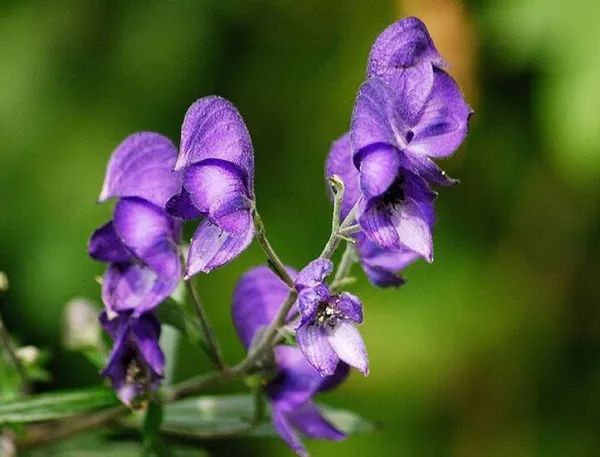
【Notes】 ① Aconite is first recorded in “Shen Nong’s Herbal Classic”, named because it grows attached to the Aconitum (mother root). Therefore, it is generally believed that Aconitum is the mother root, and Aconite is the child root. However, in the Shanghai area, Aconitum is cultivated, and during harvesting, the old root originally planted is not used, but rather the newly propagated tubers are used as medicine. The Aconitum supplied in pharmacies and Aconite are actually the same substance, only differing slightly in processing methods, thus classified as Aconitum and Aconite. ② Aconite has a nature that is harsh and dry, moving and not staying, can assist Heart Yang to open the pulse, warm Spleen Yang to strengthen movement, and supplement Kidney Yang to benefit fire, making it a key herb for warming the interior and supporting Yang. It is generally believed that this product should be used for symptoms of weak or thin pulse, pale tongue with thin white or white greasy coating, no thirst, cold limbs, or loose stools. If it belongs to Yin deficiency with Yang excess, or true heat with false cold, misusing Aconite will be like adding fuel to the fire, worsening the condition, so caution is necessary. ③ Aconite’s compatibility is quite broad, such as when combined with Gan Jiang, it can enhance the effect of reviving Yang and rescuing from collapse; when combined with Ren Shen, it can warm Yang and invigorate Qi; when combined with Rou Gui, it can supplement Yang and benefit fire; when combined with Bai Zhu, it can warm the Spleen and dry dampness; when combined with Fu Ling, it can warm the Kidney and promote urination; when combined with Gui Zhi, it can warm the channels and alleviate pain; when combined with Shu Di Huang, it can supplement Yang and nourish Yin; when combined with Cang Zhu, it can disperse cold and eliminate dampness; when combined with Huang Qi, it can warm Yang and secure the exterior; when combined with Ma Huang, it can warm the channels and release the exterior. In cases of cold and heat, Aconite can also be used with cold and cool herbs, such as when combined with Da Huang (Rhubarb), it can warm Yang and promote bowel movements; or when combined with Huang Lian (Coptis), it can support Yang and drain heat, forming formulas like Aconite Xie Xin Decoction (from “Shang Han Lun”: Da Huang, Huang Lian, Huang Qi, Aconite), which is commonly used to treat abdominal cramping, diarrhea, nausea, and vomiting, especially with sweating, cold limbs, and weak pulse.
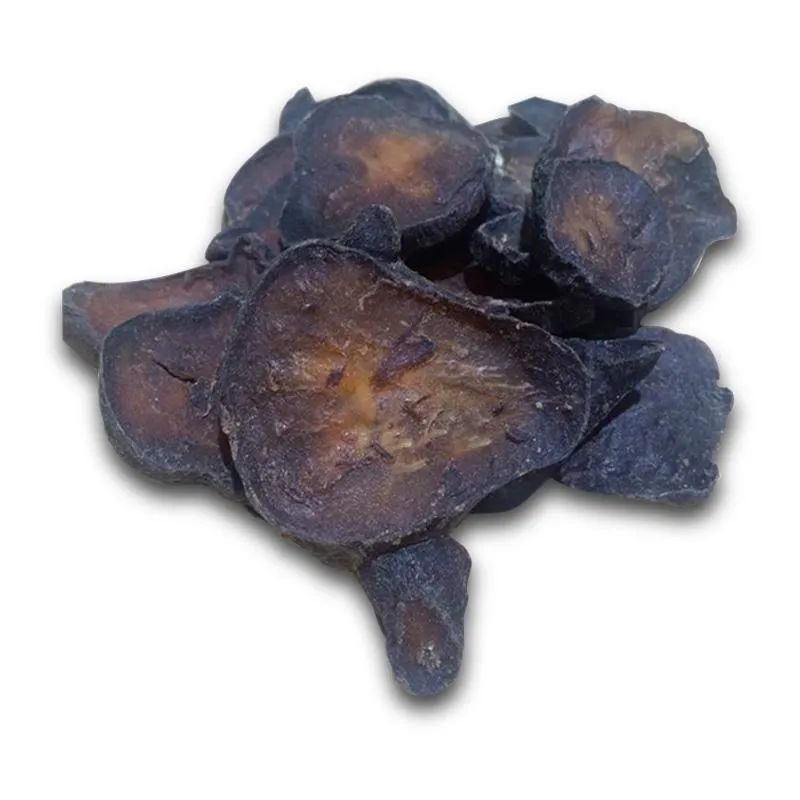
④ Although Aconite and Aconitum belong to the same substance, there are slight differences in clinical applications due to processing methods. Generally, Aconite is considered superior for supplementing fire and reviving Yang, while Aconitum is better for dispersing cold and alleviating pain. Raw Aconite, Raw Chuan Wu, and Raw Cao Wu are all highly toxic and must be processed before internal use, and decocted for a long time; the raw form is generally only for external use, but should not be used on broken skin. 【Aconite’s Medicinal Properties】 ① Aconitum: The plant source is the same as Aconite, but the processing method is slightly different. Aconitum has both raw and processed forms, usually referred to as processed Chuan Wu, which is soaked in clean water for 5 to 7 days, changing water 2 to 3 times daily, then boiled with tofu for 10 jin of the original herb with 2.5 jin of tofu until there is no white core. Take out, remove tofu, dry until half dry, cut into slices, roast or dry, or crush into pieces the size of mung beans for clinical use. Processed Chuan Wu has a spicy, warm, and toxic nature. It has the effects of dispelling wind-dampness and alleviating cold pain. It is mainly used for wind-cold-damp obstruction, hemiplegia, cold hernia abdominal pain, Yin sores, and traumatic pain. Generally, it is not used internally, but for external application to treat Yin sores, it has a dispersing effect. ② Cao Wu: Refers to the tuber of the wild Aconitum plant of the Ranunculaceae family. The processing method is the same as for Chuan Wu, and the properties and uses are also similar. The raw form of Cao Wu has the same effects and uses as Raw Chuan Wu.
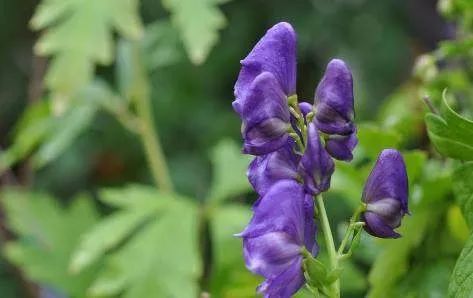
2. “Zheng Lei Ben Cao” has a spicy, sweet, warm, very hot, and highly toxic nature. It is used for wind-cold cough, evil Qi, warming the middle, traumatic injuries, breaking up masses, blood stasis, cold dampness (Wu Wo Qie), knee pain, cold weakness in the feet, inability to walk, wind-cold in the waist and spine, cold abdominal pain, cholera, cramping, diarrhea, and strengthening the Yin. It is also an abortifacient and is considered a top herb. It grows in the valleys of Qian Wei and Guang Han. Collected in winter for Aconite, and in spring for Aconitum. (The gall bladder is its envoy, it dislikes centipedes, and is afraid of Fang Feng, black beans, Gan Cao, Huang Qi, Ren Shen, and Wu Jiao.) 3. “Zeng Guang He Ji Ju Fang Yao Xing Zong Lun” has a spicy, sweet, warm, very hot, and highly toxic nature. It is used for wind-cold cough, evil Qi, warming the middle, traumatic injuries, breaking up masses, blood stasis, cold dampness, knee pain, inability to walk, wind-cold in the waist and spine, cold abdominal pain, cholera, cramping, diarrhea, and strengthening the Yin. It is also an abortifacient and is considered a top herb. It grows in the valleys of Qian Wei and Guang Han. Collected in winter for Aconite, and in spring for Aconitum. (The gall bladder is its envoy, it dislikes centipedes, and is afraid of Fang Feng, black beans, Gan Cao, Huang Qi, Ren Shen, and Wu Jiao.)
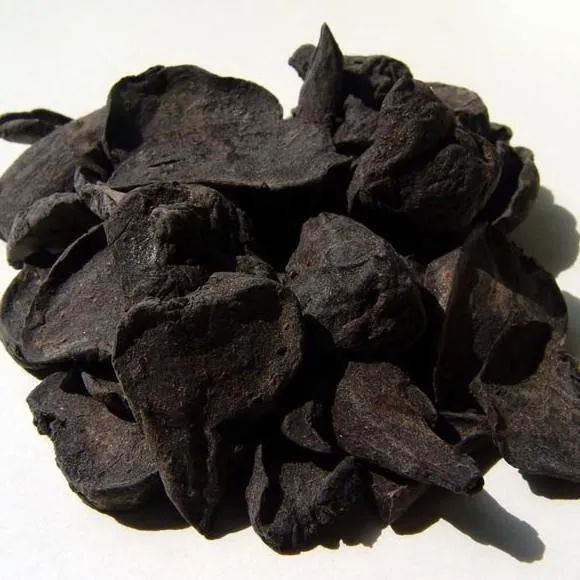
4. “Yao Long Xiao Pin” has a spicy, sweet, very hot, and highly toxic nature. It is used for cold and dampness, traumatic injuries, breaking up masses, blood stasis, cold dampness, knee pain, inability to walk, wind-cold in the waist and spine, cold abdominal pain, cholera, cramping, diarrhea, and strengthening the Yin. It is also an abortifacient and is considered a top herb. It grows in the valleys of Qian Wei and Guang Han. Collected in winter for Aconite, and in spring for Aconitum. 5. “Ben Cao Fen Jing” has a spicy, sweet, very hot, and highly toxic nature. It is used for cold and dampness, traumatic injuries, breaking up masses, blood stasis, cold dampness, knee pain, inability to walk, wind-cold in the waist and spine, cold abdominal pain, cholera, cramping, diarrhea, and strengthening the Yin. It is also an abortifacient and is considered a top herb. It grows in the valleys of Qian Wei and Guang Han. Collected in winter for Aconite, and in spring for Aconitum.


